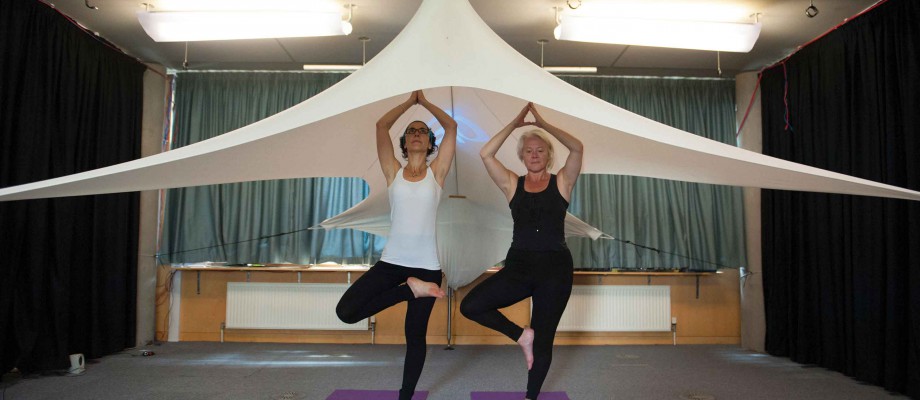
Relax and see your space grow
October 31st, 2014
A unique new architectural environment for people who practise yoga and meditation could take this ancient discipline into the digital era.
‘ExoBuilding’ is a piece of adaptive architecture which has been designed and built by a team of scientists and architects working with the University’s Mixed Reality Lab, which creates interactive technologies to enhance everyday life and is partially supported by the EPSRC Orchid project and the Horizon Digital Economy Hub.
‘ExoBuilding’ is a tent-like structure that changes its height, volume and shape according to its inhabitant’s physiological data. Occupants are wired up to heart and breathing monitors and the structure is driven by servomotors that translate signals from the Equator Component Toolkit, also designed at Nottingham.
Researchers found users showed slower breathing rates and improved heart rate patterns, resulting in a general feeling of relaxation.
Adaptive architecture is designed to adapt to the people using them and ExoBuilding’s designer, architect Dr Holger Schnädelbach, said: “Modern buildings are becoming infused with sensors measuring data streams about the environment, people and objects. ExoBuilding uses biofeedback to give the user a certain level of control of the structure around them. We are quite excited about the potential scalability and varied uses of this project in the context of the ‘Internet of Things’.”
Research psychologist Dr Elvira Perez-Vallejos, who is also leader of the yoga club at the University’s Institute of Mental Health, said: “For yoga practise, I think the ExoBuilding is an incredible tool. A key aspect of yoga is breathing and the interactive structure is like an outward visual and aural manifestation of that physiological process. There is a lot of evidence that yoga can help people with mental health problems and I think this prototype has huge potential in this area of healthcare and wellbeing.”
Research fellow in Computer Science and yoga practitioner Dr Stuart Moran added: “One of the interesting things about this project is that it brings a level of real-time objectivity, of ‘science’, to yoga which is quite in contrast to the usual perceptions of yoga as a purely spiritual practice. It is ‘science meets spirituality’ and quite a unique research avenue.”
PhD student in the Mixed Reality Lab, Nils Jäger, added: “Our yoga experiments are still a work in progress but initial results suggest this interactive environment can greatly enhance its practice and teaching. We would like to eventually scale up ExoBuilding to examine its potential for creating and sustaining group cohesion for multiple users. Additionally, this research gives us detailed insights into the relationship between the human body and digitally-driven architecture.”
Dr Elvira Perez-Vallejos, left, and fellow yoga enthusiast Liz Lesquereux, Knowledge Exchange Manager for Social Sciences, are pictured trying out the ExoBuilding.
Tags: Dr Elvira Perez-Vallejos, Dr Holger Schnädelbach, Dr Stuart Moran, EPSRC Orchid project, Equator Component Toolkit, ExoBuilding, Horizon Digital Economy Hub, Institute of Mental Health, Mixed Reality Lab, Nils Jäger, yoga
Leave a Reply
Other Issue 79

More please: A feast for Dickens scholars
A new online linguistics tool will help researchers and students study the language used in novels […]


